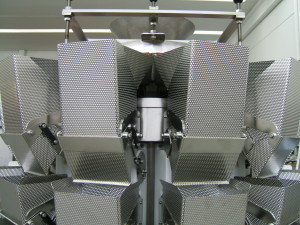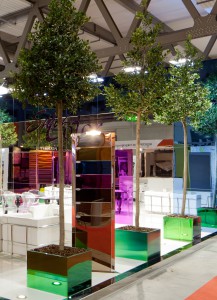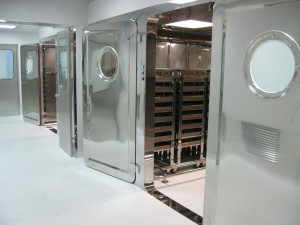
The surface finishes of stainless steels used in several industrial ambits not always assume a value of exclusively aesthetic type. There is, in fact, an intimate relationship between the finish type and the suitability for withstanding determinate aggressive environments. In general, we can anyway state that the smoother and more compact will be the sheet metal surface, with low roughness values, the higher will be its resistance to corrosion. In some cases, for instance, in which the sheet metal is used for high “responsibility” components, as in certain applications in the food and pharmaceutical industry, we tend to use “mirror” finishes, mechanically obtained with finer and finer “cloths”, or through the electro-polishing process. Just to give an idea to readers of the relationship existing between surface finish and resistance to corrosion, we have deemed it was opportune to report the result of a test carried out by simulating real atmospheres and verifying the behaviour of the various sheet metals. The assessment of the resistance to corrosion was carried out according to the results of the saline mist exposure, performed according to the UNI ISO 9227 – NSS regulation called “Corrosion test in surface atmospheres – Test in saline mist” (in conformity also with the ASTM B 117 regulation). That test is used for the evaluation of metals and alloys, some types of metal coatings, some conversion coatings, some coatings of anodic oxidation and organic coatings on metal materials. The text mixture is composed by a solution of distilled water with concentration of 50±5 g/l of sodium chloride and pH between 6.5 and 7.2. The used chamber is provided with a suitable device for maintaining the prescribed temperature (both in the test room and in the nebulised solution), with a nebulisation device and with a collection chamber of the nebulised solution. The test was carried out with the following operational parameters: 25 days of exposure, observation steps every 5 days, chamber temperature 35°±2° C, humidification temperature 55° C, sample inclination by about 20° as to the vertical.

Afterwards, considering that only some samples showed some corrosion signs, to further differentiate the behaviour of the various finishes, a further cyclical exposure was accomplished, more demanding than the continuous exposure, with 60 alternate spraying and drying cycles, lasting 2 hours each. The repeated evaporations and rehydrations of the deposited salts induce a negligible variation related to the sample weight, the assessment of the corrosion is based on the visual analysis of the appearance of dimples and rust stains. We should bear in mind that the achieved results refer to flat plates, in which the various treatments were uniformly executed, and without zones not easily reached by finishing treatments, mechanically/thermally tensioned or formed as in standard manufactured goods (the sample edges were protected against the exposure). On the other hand, the plates from which the samples were drawn came from steelwork inventories with possible traces of contaminations. At the end of the two exposure periods (first continuous and with alternate cycles then) twe can notice that they have remained unchanged: all the samples with electro-polished finish, the tested AISI 316 samples and all AISI 304 samples, excepting those with 1D and 2D finish (BA, 2B, SB finish and electro-polished). The colour variation expressed as ΔE is not directly proportional to the % of rusted surface, but in general a colour variation ΔE > 1.5. is generally linked with corroded samples. Also the colour variation of 304 SB samples is associated to a surface darkening but not to a presence of visible rust, as it was surveyed for the other corroded samples. This makes us suppose the presence of slight generalized oxidation phenomena of the surface activated by the mechanical finish. On more porous or more wrinkled samples, the rust traces are more visible than on smoother samples, because rust adheres to the surface thus forming some haloes.




